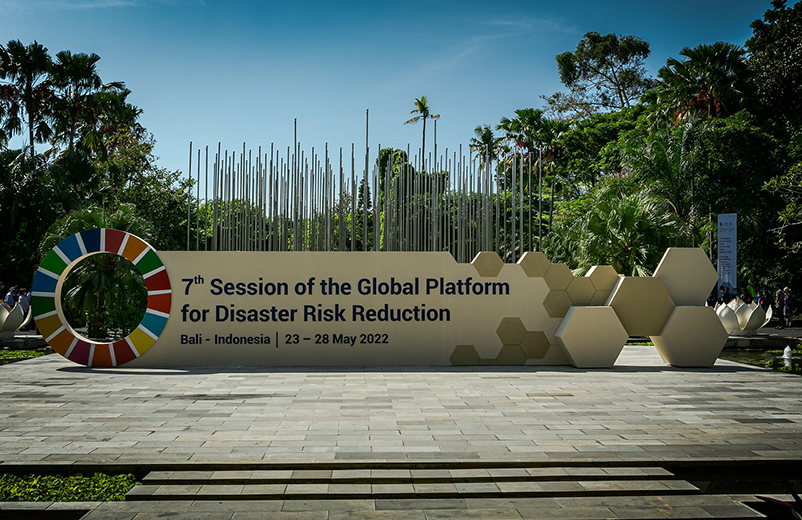In 2023, we mark the halfway point in the 15-year Sendai Framework for Disaster Risk Reduction 2015-2030. Marking this halfway point, United Nations Member States have been asked to take stock of progress against the Sendai Framework and to look forward, by setting ambitions to meet the goal and targets by 2030.
As the national and strategic coordinator to reduce disaster risk, enhance resilience and provide relief and recovery, the National Recovery and Resilience Agency (NRRA) is leading the consultative process to develop Australia’s national Mid-Term Review for the Sendai Framework. The review’s report is on track to be provided to the United Nations Office for Disaster Risk Reduction by 30 September 2022. Australia’s input will contribute to the global Mid-Term Review that will be delivered by UNDRR to the UN General Assembly by May 2023.
Context of the review
Both the Sendai Framework for Disaster Risk Reduction 2015-2030 and Australia’s national translation of the Sendai Framework, the National Disaster Risk Reduction Framework (NDRRF), emphasise that reducing disaster risk is a shared responsibility. In particular, governments and industry must take action to reduce the disaster risks within their control. This requires coordinated effort across and within many areas including land-use planning, infrastructure, emergency management, social policy, health, energy and the environment.
The national Mid-Term Review will take into account disaster risk reduction activities across all sectors and highlight leadership through case studies. As we know, disasters are not natural. They are a product of the combination of naturally occurring events such as bushfires, floods and cyclones combined with human decision and actions or inactions. The decisions we make about where to build, work and live can create or reduce risks and result in ever-changing and increasingly complex risk environments. Other factors such as climate change, increasing populations and expanding urbanisation exacerbate disaster risk.
The national Mid-Term Review is as much about looking forward as it is about looking back. It will retrospectively analyse national implementation of the Sendai Framework from 2015 to 2022 and prospectively review and identify challenges, context shifts and adaptive, transformative actions to be taken to the end of the Sendai Framework in 2030. The review will report on progress in integrating disaster risk reduction into policies, programs and investments at all levels of government and across all sectors, identify good practice, gaps and challenges as well as the actions needed to accelerate implementation in Australia. Given Australia’s progress and achievements in reducing disaster risks, we recognise the importance of taking stock of the work that has been done and highlighting best practice where it takes place.
Links with the National Action Plan
The NRRA is concurrently leading the development of the Second National Action Plan under the NDRRF and is consolidating consultations where possible. Given the whole-of-society approach to the Sendai Framework, the consultations take into account local, state and territory, industry, community and other sector perspectives to build a national picture of the disaster risk reduction effort. The national Mid-Term Review will highlight case studies on disaster risk management reforms within states and territories.
To deliver key priorities, the NRRA is involving governments, the private sector and communities in developing a comprehensive and shared domestic vision for disaster risk reduction. This is being done through targeted interviews, subject deep dives, face-to-face workshops, dedicated workshops with local government and the 2-day From Risk to Resilience Summit held in Sydney in June 2022.
Consultations to inform the review have been designed around 3 key pillars:
- understanding the dynamic and systemic nature of disaster risks to address root causes rather than symptoms
- novel approaches to collaboration and robust governance across all sectors of society
- investment in resilience.
So far, stakeholder consultations have raised priority actions including the need for open and inclusive multi-level governance mechanisms, developing a greater understanding of the shared responsibility of the domestic disaster risk reduction system, better integration across systems and the removal of implementation barriers. Other actions include incorporating disaster risk into investment and financial decision-making, increasing investment in disaster risk reduction and resilience and translating the Sendai Framework into local contexts.

Global Platform for Disaster Risk Reduction, May 2022, Bali, Indonesia.
Image: Antoine Tardy for United Nations Office for Disaster Risk Reduction
Showcasing Australia’s expertise on the global stage
In May 2022, an Australian delegation from the NRRA and the Department of Foreign Affairs and Trade attended the Global Platform for Disaster Risk Reduction in Bali. The objectives for the Australian delegation were to:
- exemplify Australia’s commitment to multilateral mechanisms to address disaster risk reduction
- share Australia’s national disaster and resilience capability including experiences in managing bushfires, the pandemic and extreme weather events
- strengthen partnerships within the region to enhance climate and disaster resilience, particularly with a focus on the ‘lived experience’ of people in the Pacific
- learn from practice globally to broaden our disaster risk reduction knowledge and capability
- increase our advocacy for inclusion and reinforce Australia’s international focus and reputation as a leader on disability inclusion, gender equality and use of Indigenous knowledge.
Collaboration included briefings on Australia’s national Mid-Term Review as well as meetings with stakeholders including the Special Representative of the Secretary-General for Disaster Risk Reduction in the United Nations Office for Disaster Risk Reduction, Ms Mami Mizutori.
The time is ripe for transformative, accelerated action to reduce systemic disaster risk and the NRRA is leading the charge.


